Brazil vs Argentina: Which Travel Destination is Right For You?
February 16, 2020
Should I go to Brazil or Argentina? It’s a popular question for those planning a trip in South America. You’re doing your research, figuring out what you want to see and do, what your budget is - but the question remains.
Which of these two popular South American destinations is right for your next trip? Let’s review …
Argentina
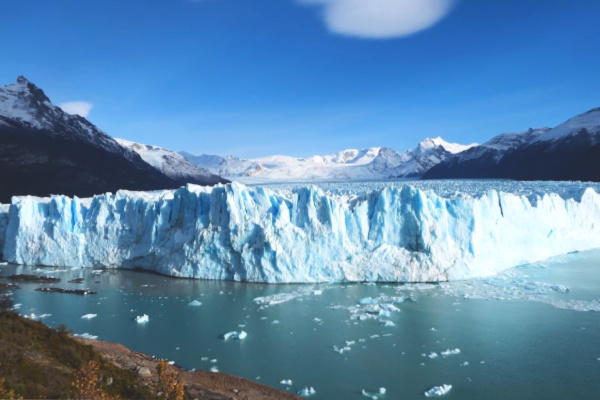
Argentina is a top choice for travelers seeking adventure tours in South America. There are jagged peaks to climb, lakes to kayak, glaciers to walk on and one of the largest waterfalls in the world to gape at. Then there’s the buzzing, chaotic swirl of the bright city - Buenos Aires being the most popular Argentinian city to visit.
Fiesta all night, eat like your life depends on it and, obviously, learn to tango. With a captivating European flair and a deep vein of Latin American passion, Argentina is a mosaic of possibilities for those seeking culture, cuisine, wildlife and adventure.
Brazil
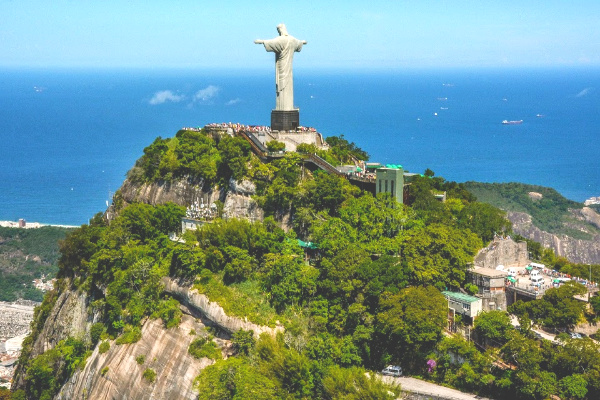
In Brazil, the largest country in South America, there’s a similar juxtaposition of metropolis and Mother Nature. Brazil’s girth makes it difficult to cast a wide net and capture just one or two distinct personalities. Instead, this South American powerhouse offers ample choice for the adventure traveler, for the foodie, for the nature lover, for the sun worshipper and for the city sophisticate.
Get lost in the frenzy of Sao Paulo and Rio de Janeiro. Celebrate with the locals during carnival or festival season. Or, cheer on the world’s most decorated national soccer team. Venture into the Amazon Rainforest and commune with the legions of plant and animal species that call the world's most diverse ecosystem home. From sunrise to sunset, the Costa Verde to the Pantanal, Brazil boasts countless tour opportunities for all travel tastes.
Let’s dive a bit further into the similarities and differences between these top two South American travel destinations:
Landscape
It’s true - Brazil and Argentina live up to the claims. They’re both incredibly beautiful countries, so it’s going to be a win whichever you pick. (Plus, there’s always your next trip…)
Brazil is beaches and biodiversity. There are 4,500 miles of coastline, with white-sand stretches from Ipanema to Buzios. Yet, there are also colonial towns and indigenous communities, red-rock canyons, vibrant cities and, of course, that little place called the Amazon. A destination unto itself, this legendary rain forest supports the most plant and animal species of anywhere else on Earth, from pink dolphins to toucans.
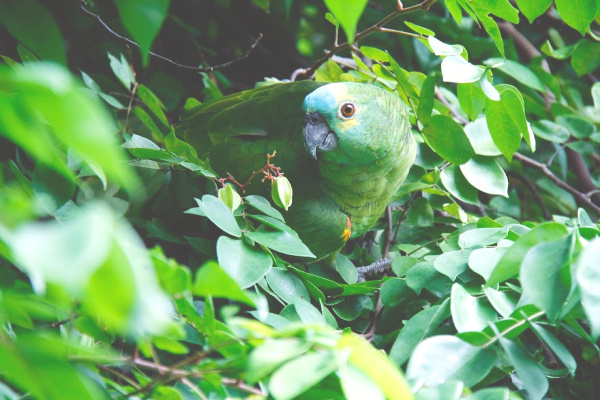
Argentina is glaciers and grassland… and crashing waterfalls, lush wetlands, sunset-hued deserts, bracing blue lakes and Patagonian peaks. There’s abundant wildlife in this landscape as well, whether you want to waddle with penguins or gape at giant anteaters.
In bustling Buenos Aires, you can catch a game of street soccer while sipping a mate tea, as the sounds of the tango drift around you. Beyond this biggie, there are countless other Argentinian cities worth touring, including Mendoza, Bariloche and Cordoba.
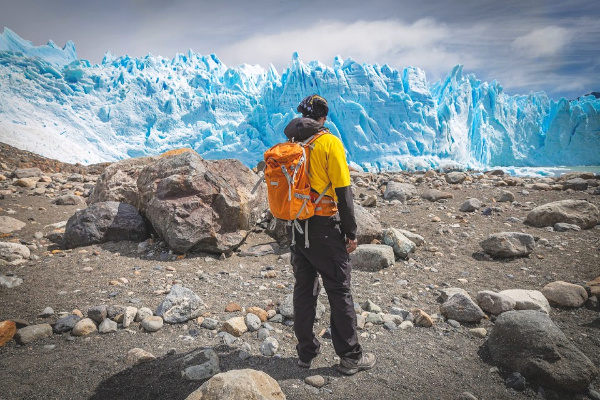
What about that stunner, Iguassu/Iguacu/Iguazu Falls? You won’t have to pick a side. It’s possible to view the mighty falls from both countries in one day - though, admittedly, that will be a long day. If you can, look for a tour that includes a view from both sides over the course of a couple of days. It is said that the more epic views are from the Brazilian side - go now and decide for yourself!
Highlights
The list of highlights in Brazil and Argentina is long … here’s a peek at some of each country’s top attractions and what you should look for in your South American tour to either of these richly rewarding destinations.
What You Can't Miss in Brazil
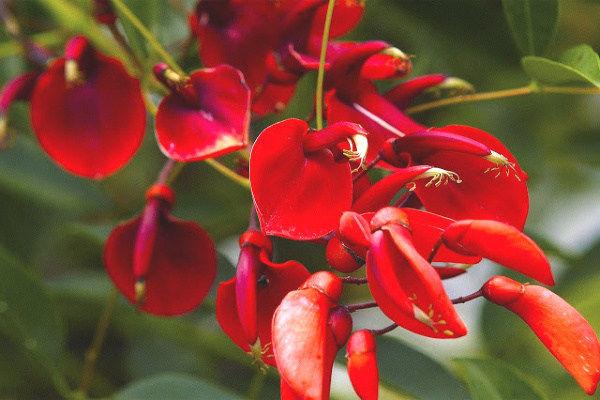
1. Iguazu Falls
Love waterfalls? You can’t miss Iguazu Falls (Foz do Iguaçu) at the border of Brazil, Argentina and Paraguay. Your heart will skip a beat as you peer down from the wood platform that spans 262-foot Devil’s Throat.
2. Christ the Redeemer
You’ve seen it in photographs, now feel all the feels when you stand at the foot of this nearly century-old white statue atop Corcovado Mountain - it’s one of the New 7 Wonders of the World. Turn around for spell-binding views of Rio de Janeiro.
3. Sugarloaf Mountain
Another winner for Rio - Sugarloaf and its panoramas of the city and coast is a rewarding sightseeing outing. The cable car ride alone is enough to make you giddy.
It’s almost unfair to any other attraction in Brazil. What can compete with a dense jungle that is home to the greatest biodiversity on the planet - plus, pink dolphins. Explore the rainforest on a guided tour and you’ll learn all there is to know about this ecologically diverse region.
5. Pantanal
Head west to this vast wetland, home to thousands of toothy caimans, jaguars, capybaras and hundreds of bird species - it’s a wildlife haven and a top destination for nature tours in Brazil.
What You Need to See in Argentina

Your phone won’t quite hack it - bring in a legit camera for the views you’ll encounter here in Patagonia. Glaciers calve in thunderous glory, leaving gargantuan ice cubes in the deep-blue lakes.
Patagonia tours will lead you to the park’s southern section for glacier viewing, and to the northern section for hiking and trekking on such majestic peaks as Mount Fitz Roy.
2. Buenos Aires
This sizzling capital city of European influence is one of Latin America’s largest and most beloved metropolises. It’s here that tango was born and where you’ll find captivating culture, cuisine and nightlife in all of its unique barrios.
3. Mendoza
What is Argentina’s best destination for wine lovers? Laid-back Mendoza is the clear winner, beloved not only for its wine, but for its beautiful natural scenery and outdoor travel opportunities.
Take a guided hike or horseback riding tour in the nearby Andes, then spend the evening wine tasting, dining, shopping and strolling through Mendoza’s pretty plazas.
If you’re seeking adventure travel in Argentina, consider a tour of the Bariloche region. Trek and ski on Cerro Catedral, glimpse glaciers, river raft and photograph amazing waterfalls in Nahuel Huapi National Park.
5. Ushuaia
It’s the end of the world … a dramatic landscape of Andes mountains, plains and plateaus. Antarctica tours begin from here, on the Beagle Channel, and a diverse collection of flora and fauna await nature lovers at Tierra del Fuego National Park. Don’t miss the End of the World Lighthouse (San Juan de Salvamento Lighthouse).
BONUS! And … Iguazu Falls (Again)
It hardly seems fair to list one of the seven natural wonders of the world as an attraction soley for Brazil. The stunning falls also offers views from the Argentinian side as well.
Your Iguazu Falls tour will take you to the pretty Argentinanean town of Puerto Iguazu and allow access to the walkways and boat rides, where you’ll feel the spray of the water.
Budget

Let’s look at which is a better value: Argentina or Brazil? Research into this very question has led experts to suggest that you can expect to spend around $500 per person for a week in Brazil, and about $300 per person, per week, in Argentina. Looking at it a different way, a February 2020 cost of living survey reflected that Argentina is 28 percent cheaper than Brazil.
Overall, accommodations and dining seem to run a bit less in Argentina than Brazil, as well. Of course, if you are traveling on a packaged guided tour with a company that offers local connections, there are bound to be some efficiencies of cost built into your tour price, such as sightseeing, transportation, gratuities, dining, lodging, etc. Through the budget lens, overall, Argentina is a better deal.
Transportation
Once you’ve made your choice between Brazil and Argentina, it’s nice to know what to expect on the transportation front. Will you need to rent a car? Are flights readily available? Is the train service reliable? Are there car-sharing services?
How Do I Get Around Brazil?

Getting around Brazil is fairly straightforward. Domestic air travel is affordable and abundant - in fact, after the United States, Brazil has the highest number of airports in the world. (Keep in mind that there is a relatively high incidence of delayed arrivals and departures).
The long-distance bus network is also extensive (and more on time than air travel!). Expect to be able to connect to all major cities - practically every large town or city has a rodoviaria (bus terminal), typically located on the outskirts of town. From there, it’s easy enough to catch a taxi or a ride-share into the city.
A self-drive tour in Brazil will require a car rental, so make sure you have a valid driver’s license, passport and major credit card readily available. The roads in southern Brazil are in the best shape, deteriorating slowly as you move northward.
Plan on renting a 4x4 vehicle that can handle the unpaved, rough conditions of roads if you’re heading to the Amazon, Pantanal or Sertão. And don’t even think about a motorcycle - unless you plan on applying for a Brazilian driver’s license. Try to drive more in the daytime than nighttime.
The roads, including the highways, are not well lit so it can be hard to see road signs, other drivers, potholes and speedbumps. In some areas, local drivers consider red traffic lights optional at night - scary!
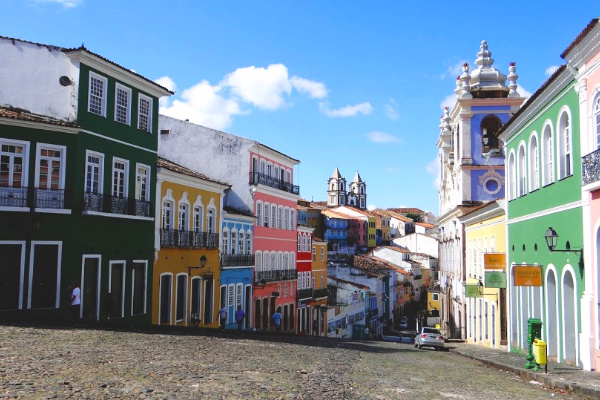
Train travel in Brazil is not common, although there are several scenic rail journeys available to tourists. Consider the two most popular: Curitiba to Morretes and Belo Horizonte to Vitoria.
Boat travel in Brazil is much more likely to be available than train service, especially in the Amazon, the north of the country and the northeastern coast. One of the top boat trips in Brazil is from Manaus to Belem.
Within the cities themselves, there are several options for transport, including modern subway lines, extensive bus networks and minivan taxis. Watch out for petty theft at bus stations - keep your belongings secure. To flag down a taxi, raise your hand on the side of the street, walk to a taxi stand or order one by phone. In more rural Brazil destinations, expect to get around on a motor taxi (the back of a moped).
How Do I Get Around Argentina?
Most travelers, local and foreign alike, travel throughout Argentina by long-distance bus. They’re quick, keep to a schedule and more affordable than air travel. There is usually food service on board the buses or a schedule stop at a restaurant. If you’re in a medium-size town or city, look for the local bus, called a micro, or colectivo - the drivers are typically willing to drop you off anywhere you’d like to go, not just the marked bus stops.
Long-distance trains run throughout Argentina, including overnight trains. A privately owned rail company runs out of Buenos Aires to northern Argentina, including Rosario, Cordoba and Tucuman, while the public railway company offers service within the Buenos Aires region.
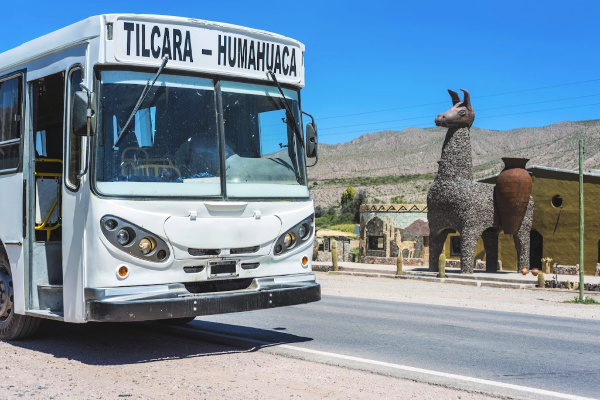
Keep in mind that the quality and efficiency of Argentina’s train service is sporadic - for example, coach class might have heating on some trains and on others, making wintertime train rides quite chilly.
Buenos Aires also offers a subway system (it was actually the first underground metro system in Latin America). Buy a rechargeable SUBE travel card to make your travel more efficient. Depending on the line, you can expect subway service every three to ten minutes - and, as expected, larger crowds at commuter times.
Travelers to Buenos Aires may also travel by city bus, which runs 24/7 throughout the city. There’s always a stop near you. Hop on, tell the driver where’re headed and he’ll collect the correct fare from you.
Taxis are safe and easy to spot - look for black and yellow taxis in the capital city, or white with blue lettering in the provinces. Airport taxis are white and blue, as well. Fares are strictly in Argentine pesos. Another option is a privately owned taxi (remise). Call the dispatcher or simply walk into any storefront location that shows a “Remise” sign.
Care to bike? Buenos Aires offers Ecobici, a free, 24-hour bike-share service. There are more than 200 kilometers of cycle lanes within the city, making biking a great way to tour Buenos Aires.
Take the passenger or vehicle ferry in Argentina from Buenos Aires to Colonia del Sacramento and Montevideo in Uruguay. There is a one-hour, fast-speed hydrofoil to Colonia as well. The regular ferry takes three hours. Ferry plus connecting bus service is also available to Montevideo and Punta del Este; both trips are about five hours long.
Food

Argentina
Meat eaters are in heaven in Argentina, where just about everything is grilled to perfection. For a great steak, ask your Argentina tour guide for a grill house (parrilla) recommendation - they’re all over the place, offering glistening cuts of all kinds, sausages and vegetables (grilled, of course) - wash it all down with a perfect glass of Malbec from the Mendoza region.
For a special treat, ask for a steak cooked on an asado (a time-honored gaucho tradition of roasting meat for hours over hot coals). There’s a rich Italian heritage in Argentina, so you can expect to find pizza and pasta on many menus, as well. Be sure to try Mate, made with dried leaves of Yerba Mate and typically served in a hollow gourd.
Brazil
Brazil’s local delicacies span from the ubiquitous caipirinha cocktail to churrascaria (all-you-can-eat barbecue). There’s incredible seafood from the Atlantic and the Amazon, satisfying street food and all manner of cuisine influenced by cultures who have settled here, from West African to European.

Dig into moqueca, a seafood stew originating with the Afro-Brazilian population in the northeast. In Salvador, sample an acaraje, a bean and shrimp fritter. In Bahia, indulge in the custard-like quindim or one of the many varieties of Brazilian bolos (cakes).
Don’t end your Rio de Janeiro tour without one of the most popular meals in Brazil - feijoada, a sumptuous black bean and pork stew. Dining in the Amazon? Try the flavorful fish, from various catfish varieties to peacock bass to piranha.
Culture
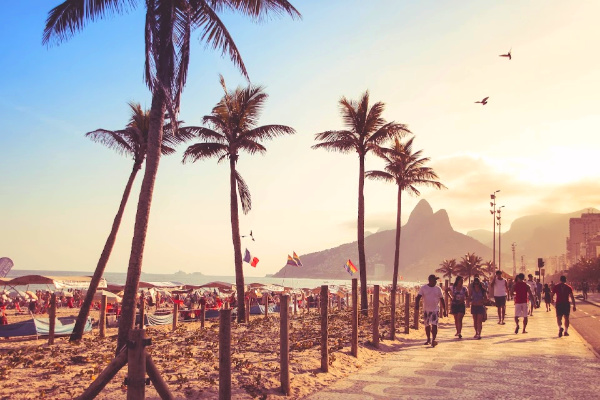
What does Argentina mean to you? Most likely, it conjures up images of sultry tango dances andraucous fútbol (soccer) matches. Fans of the pitch should definitely include a visit to the stadium in their Argentinean tour.
There’s a European influence on the Latin American culture of the country, hearkening back to a time when Portuguese and Spanish colonists, as well as African migrants, came to the country. Take that most sensual of dances, the tango, for example. The mastery, the control and the melancholic manner are a commingling of African, Andalucian and Italian influences.
Cultural and ecotourism-based visits to Argentina introduce you to rural communities where you’ll explore traditions and customs firsthand - perhaps even staying in a local home. The vineyards, croplands and ranches of the Salta region of Los Colorados allow one to take an immersive peek at what everyday life is like in the Andes, sample traditional food and check out adobe architecture.
Back in Buenos Aires, expect a distinctive cultural flair as a result of European and American Indian influences. Often referred to as “little Europe,” the capital city brims with European architecture and a plethora of art, music, museums and culinary offerings.
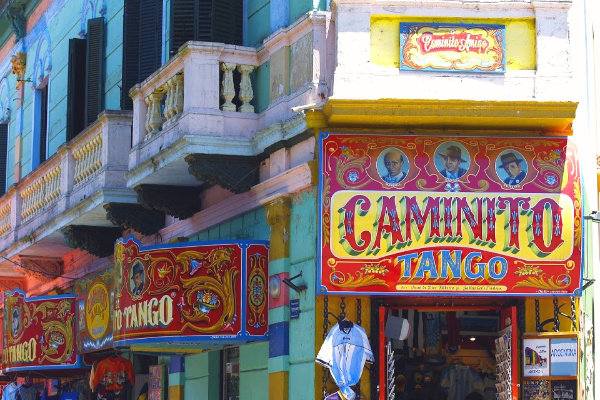
Don’t underestimate the value of a good festival to introduce you to the local culture in Argentina. Visit during the Carnival festival of Tilcara, the Buenos Aire Tango Festival or indie film festival, the gaucho festival in Parque Criollo or any number of other festive days and weeks to experience an authentic slice of Argentinean life.
Brazil’s diverse population makes it one of the most culturally interesting destinations in the world. Between European colonization and the slave trade, settlers and migrants brought their customs, ideas, beliefs and innovations to the country, resulting in a multi-layered, modern Brazilian culture.
Look for colonial architecture throughout Brazil, particularly on Spanish and Portuguese influence. Learn about the African and indigenous American traditions, music, dance and food. Expect to see the mark of the Roman Catholic faith in Brazil (and Argentina, for that matter), with an emphasis on family values.

Join the party at the Brazil Carnaval each spring. Check out a growing contemporary photography scene, from the likes of Vik Muniz and Miguel Rio Branco. Marvel at cave paintings in Serra da Capivara National Park, dating back to 13,000 BC. From literature to music to film, Brazil’s melting-pot landscape makes for one of the most culturally rich travel destinations in South America.
If you’re seeking beach time, rainforest tours and bustling city life, choose Brazil over Argentina. Do keep in mind that if you’re not seeking a party atmosphere, you may not enjoy Brazil and Rio de Janeiro during Carnaval season.
There’s a bit of a party scene throughout Brazil - more so than Argentina - something to consider as you choose your South America guided tour. If you prefer diverse natural landscapes - all the way from majestic waterfalls to colossal glaciers to vast savannahs - as well as a European flair in the larger cities, choose Argentina.
Both countries have so much to offer in the way of friendly, welcoming locals, historic sites, abundant wildlife and humblingly beautiful landscapes.
Weather/Climate
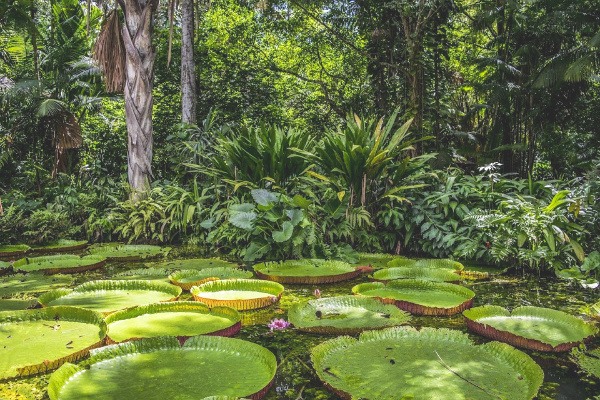
Think about the time of year you have available for a vacation to Brazil or Argentina and what you’d like to do on our tour. If you’re seeking outdoor adventure in these top South American destinations, opt for summer, but keep in mind that heat and humidity will increase the farther north you go.
Truly, both countries have wonderful activities and sightseeing opportunities no matter the time of year, so plan accordingly and choose your Brazil or Argentina tour according to your desires and you’ll have a grand time. As it is best to be prepared for all kinds of weather, keep the following weather patterns in mind as you do your research:
It’s warm and beautiful year-round in Brazil - the country is fortunate to have a variety of climates, none too extreme to cause discomfort during your travels. Summer in Brazil is from December to March (consider visiting for New Year’s or Carnival to take advantage of the warm temps); winter is June to September.
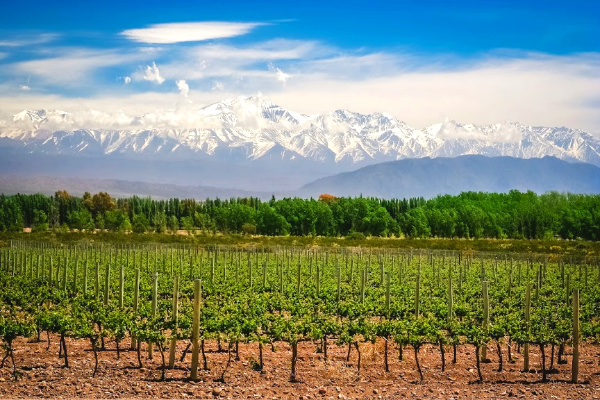
Even in June and July, it’s not particularly rainy - use the afternoon showers as a time for a siesta! To avoid crowds and higher prices, take a Brazil tour in September and October. If you’re visiting The Pantanal and prefer drier weather, take a tour between April and October. However, optimal wildlife spotting will be when the weather is wetter, just as in the Amazon.
When to travel to Argentina really depends on which part of the country you’ll be visiting. For Patagonia tours, aim for December through March. If you’re including Buenos Aires in your Argentina vacation, think about the cooler months of July and August, as the summer months can be stiflingly warm.
When should you visit Argentina’s Lake District? Springtime - from September to November - holds the promise of blooming wildflowers everywhere you turn. And if you’re called to the wine country and Mendoza, visit Argentina in the fall.
Argentina or Brazil - have you made your choice?
Check out the top guided tours to Argentina and top guided tours to Brazil for all travel interests.
How well do you know the world?
Play the gameCompare your travel trivia knowledge with friends. How many can you get right in 1 minute?

Connect & Share
"Brazil vs Argentina: Which Travel Destination is Right For You?"
Recent posts









